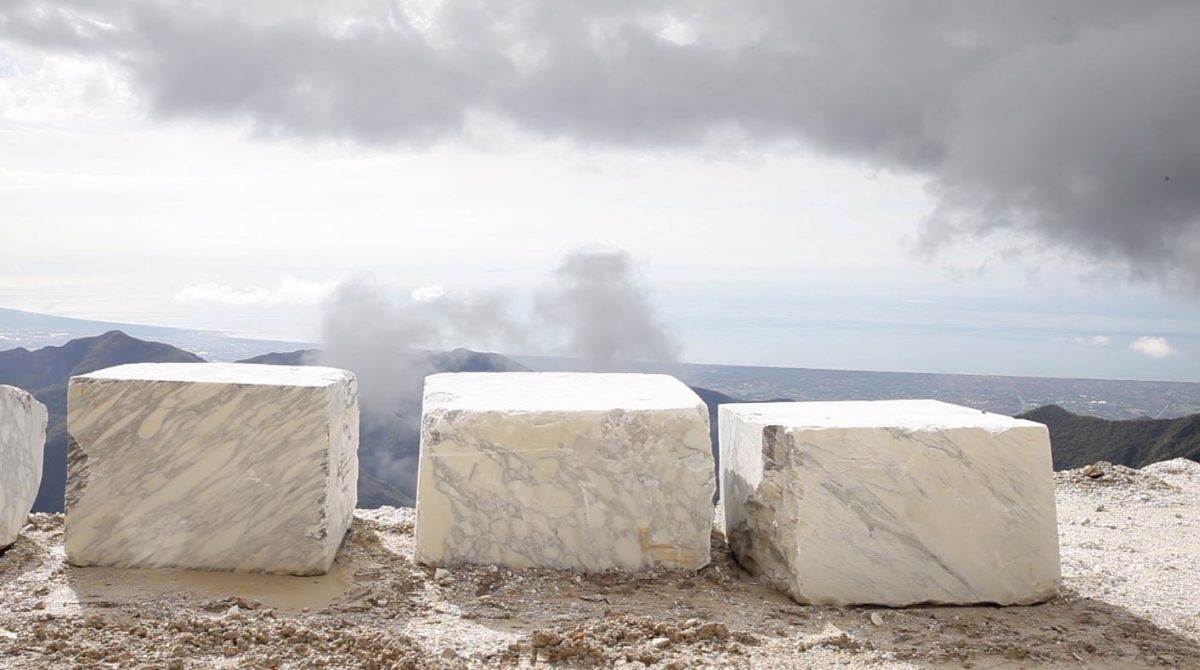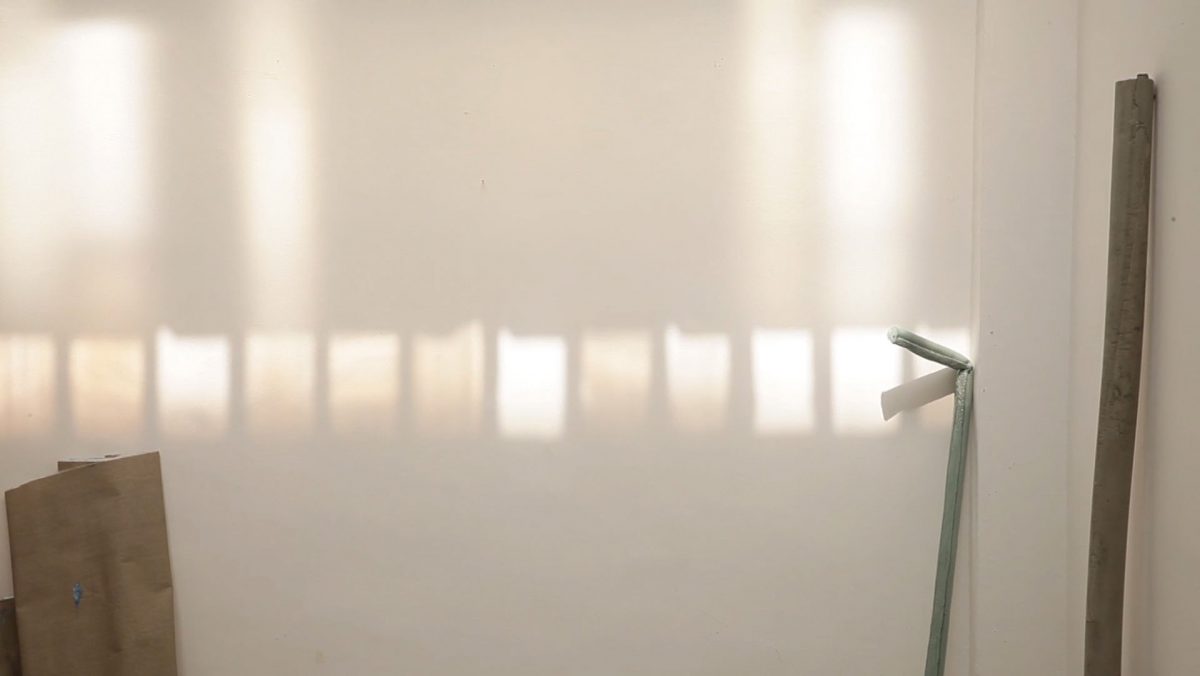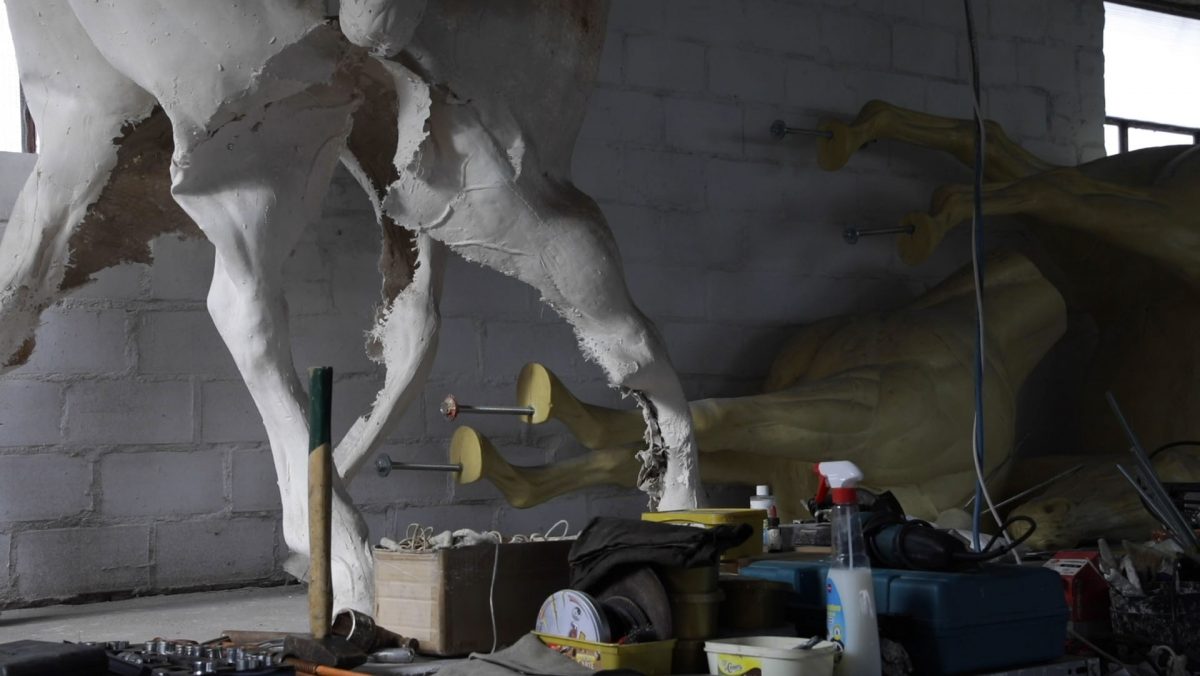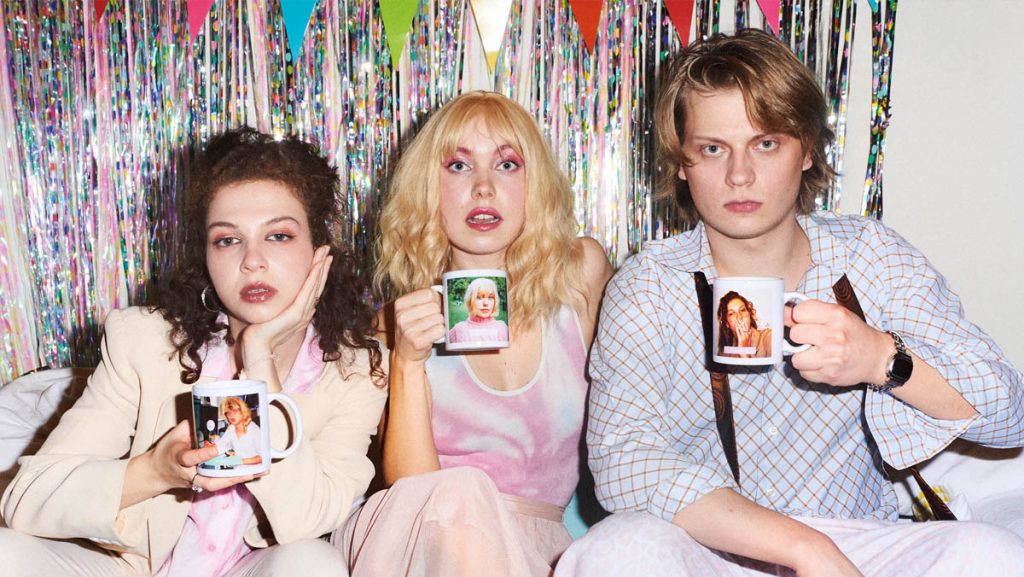
By abstaining from any pre- established definitions of ‘studio’, ‘art’ or ‘artist’, Instudio aims at setting up a critical investigation of what the studio is, was and could become. Founded by Davide Daninos and Jacopo Menzani in 2015, it is now run together with Elena D’Angelo.
What is Instudio, for the ones that do not know yet? What is your mission?
We usually define Instudio as an online archive devoted to the analytic inquiry of the material and immaterial artists’ workplaces in Italy. Our team currently includes a critic-curator, a design expert and former photographer, and a producer. We know that this could sound heterogenous, yet, even before the idea of Instudio came to life, each one of us had been spending quite some time inside artists’ studios for different reasons and outcomes: sharing the rent, researching, visiting, talking, planning etc.
Many of these moments have always been—and still are—a formative opportunity for us, to think and reflect on how these places behave and collaborate with their inhabitants.
They are not just places of labour, but active spaces designed for personal education, confrontation—with yourself and your peers—, and freedom. The idea to talk about this frame of mind arrived organically, as a natural continuation of these conversations.
What kind of realities are revealed when you visit/film the artists in their studios?
Entering an artist’s studio is our preferred way to understand their research, going directly to the source.
These places are so often saturated with the artists ideas and sensibilities that crossing the threshold of their workspaces is like stepping in their field of vision, experiencing from their point of view how they see—and think—the world.
It is an exercise in understanding the other—not so different, maybe, from anthropological research. We never assume what the studios could mean for their owners. The artists will always give their own answer. It is an investigation from the inside: using the artists’ voiceover as the only commentary, we want to highlight their point of view, their own interpretation of what a studio, and therefore being an artist, could mean today.
Rarely you will see an artist at work in our videos, we are more interested in picturing their working environments, as well as their inner landscapes.

Still from Sara Enrico, 2015, video HD, colour, sound, 4’56’’. Courtesy: in-studio.net. 
Still from Sara Enrico, 2015, video HD, colour, sound, 4’56’’. Courtesy: in-studio.net.
Still from Sissi, 2016, video HD, colour, sound, 8’18’’. Courtesy: in-studio.net.
From all the archiving possibilities that exist, why did you opt for the short film medium?
Short film was never really a choice, as much as the only possible option. We are working within a visual field, and we are trying to explain a dynamic space. So, moving images are the only medium capable of suggesting the nature of each studio. Even if our images are extremely contemplative and detail-oriented—sometimes almost like a series of still-life—, it is through the small movements within each frame that we can try to record the artist’s own gaze, behaviors and attitudes.
This also gives us the possibility to associate the artist’s thoughts to the images, confirming or expanding each statement with details of tools, books, or even dust.
To whom do these films serve today, and in the future, who do you imagine that will sit in front of the online archive and watch these documentary works?
After the first attempts, we understood therefore that filming such experiences could serves multiple purposes. First of all, these places are private, for a good reason of course. Yet sharing them via short videos could help bring them closer to an audience that usually doesn’t have the chance to visit them, creating an opportunity to understand what artists really are, far from the spotlights and usual stereotypes. For such reasons, these are places and ideas worth preserving. Our archive would like to store and share the memory of these conversations, that could also become an asset for future research. Even if the videos can only capture a specific moment in time and space, some of the artists keep using them for years, as a tool to share their practice, and that is just great.
When did Instudio started this investigation project? What have happened since then?
We started the project in 2015.
Many of the studios that we filmed are now gone, lost, or completely transformed. Therefore, we like to think these documents have already gained some specific value.
At the end of 2020, for the first time, we went back to a studio that we had already filmed. Thanks to the invite of Museum Mudam Luxembourg and Ambasciata d’Italia in Lussemburgo, we went back to Giulia Cenci’s studio, in the countryside of Tuscany. We were so surprised by how much it had changed in just a few years, and this resulted in us filming a completely new investigation.

Still from Giulia Cenci, 2020, video HD, colour, sound, 6’37’’. 
Still from Giulia Cenci, 2020, video HD, colour, sound, 6’37’’.
What have been the most unorthodox artist studios that the Instudio team have seen during this almost six-year journey?
We could never single out one studio among all the ones that we shot: we often select them precisely because they feel unorthodox, unique, and specific. Or better, we believe that the boundaries of the studio are flexible, and dependent on each artist’s needs and sensibilities.
So, part of the work is also showing that, whether we are in a car, in a stone quarry, or in a box filled with dirt, we are still exploring someone’s workplace and practice. We always hope that once the video ends, as unorthodox as the space felt in the beginning, the viewer will come to perceive it as the only possible one for that specific artist.
To offer some examples of this ‘specificity’, a couple of the most visually unexpected were probably Luigi Presicce’s Wunderkammer, and Alessandro Di Pietro’s car, that associates the concept of studio with his own moving vehicle. Speaking of artists that don’t work only in traditional laboratories, we cannot fail to mention all the studios that are expanded all over the landscape, such as Giulia Cenci’s childhood home and farm, the Mediterranean seashores of Renato Leotta’s and Fabrizio Prevedello’s marble quarries near Carrara and Serravezza.

Still from Alessandro Di Pietro, 2020, video HD, colour, sound, 8’01’’. Courtesy: in-studio.net. 
Still from Alessandro Di Pietro, 2020, video HD, colour, sound, 8’01’’. Courtesy: in-studio.net. 
Still from Renato Leotta, 2019, video HD, colour, sound, 7’21’’. Courtesy: in-studio.net.
Still from Renato Leotta, 2019, video HD, colour, sound, 7’21’’
Still from Luigi Presicce, 2015, video HD, colour, sound, 8’38’’ Courtesy: in-studio.net.
In which Italian city is Instudio located? Do you film realities from artists‘ studios all over Italy?
We are based in different cities in Northern Italy, but we are trying to cover all the regions from North to South, to gather as many different contributions as possible, to have a somewhat comprehensive yet fragmented view of the Italian landscape. For example, the next artists in our docket are Alice Visentin, based in Turin, and Jonatah Manno, which currently works in the city of Lecce and other sites in Salento.
What are you currently working on, and what you would like to do in the future?
For the future we would like to keep filming new realities in Italy while continuing other collaborations with international institutions and platforms, to bring more videos about Italian artists abroad. Recently, for example, we had a pleasant experience working with the Istituto Italiano di Cultura di Tokyo, inside the framework of the project “Italia Zokugo,” curated by Moe Yoshida Veggetti and Gabriele Tosi. This opportunity led to a new montage of our videos for the Japanese public and a screening, both in Tokyo and online. We are currently in the works to present our new video about Alice Visentin in Rio de Janeiro, thanks to the local Istituto Italiano di Cultura.
If you would have a vast budget, what would you like to realize? Tell us a „dream in a drawer“ of Instudio.
Having the right opportunity, an idea that is circulating among us is how to translate our archive into an exhibition format. Not a projection or a screening—which are always welcomed opportunities when they happen of course—, but something different: a new collaboration with artists, to reflect together how to translate in a physical space, with their artworks, the same concepts, landscapes and sensibilities that are central in their research and in our videos.
Address and contact:
www.in-studio.net
IG: www.instagram.com/instudiovideo/
FB: www.facebook.com/instudiovideo




